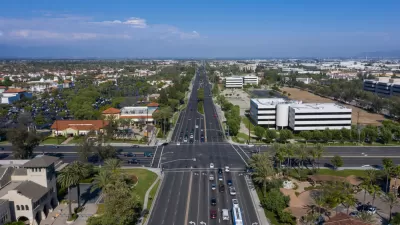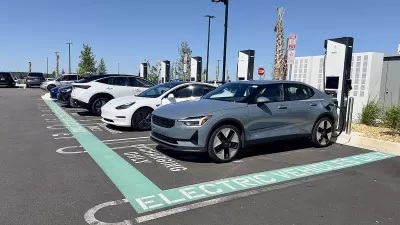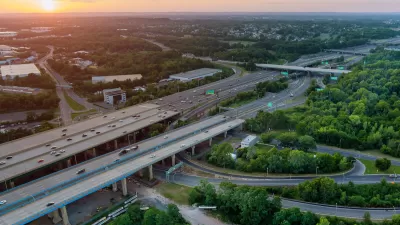The reasons for a ten-month moratorium on gas station development in the city of Rancho Cucamonga portend a major shift in transportation and land use priorities in the near future.

Steve Scauzillo reports from Rancho Cucamonga, a city located on the fringes of the Inland Empire in Southern California, where the City Council recently implemented a ten-month moratorium on new gas station development throughout the city.
The city has 34 gas stations, nearly twice as much as the neighboring city with the second-most gas stations, Fontana with 21. In Rancho Cucamonga, the number of gas stations works out to .69 service stations per square mile.
The newly implemented moratorium follows a study by city planners that produced three main findings, according to Scauzillo:
- There are a lot more in this All-America city than in any nearby city.
- Sales tax revenues from service stations are falling.
- Calls for police and fire services are rising, nearly doubling in four years.
The city credited the decline in gas tax revenue to increasing numbers of residents driving electric vehicles—a reality that has long been predicted as a reason for gas tax reforms.
According to Scauzillo, city planners will use the moratorium to generate more answers to questions like, "Should new gas stations be located near schools or parks where children play?"
Also, notes Scauzillo, most the city's gas stations are in the southwest and central areas of the city, "leading to environmental justice issues since these areas have more dense and older housing stocks."
FULL STORY: Why are there so many gas stations in Rancho Cucamonga?

Planetizen Federal Action Tracker
A weekly monitor of how Trump’s orders and actions are impacting planners and planning in America.

Congressman Proposes Bill to Rename DC Metro “Trump Train”
The Make Autorail Great Again Act would withhold federal funding to the system until the Washington Metropolitan Area Transit Authority (WMATA), rebrands as the Washington Metropolitan Authority for Greater Access (WMAGA).

DARTSpace Platform Streamlines Dallas TOD Application Process
The Dallas transit agency hopes a shorter permitting timeline will boost transit-oriented development around rail stations.

DC, Columbus Bike Share Fleets Introduce Cargo Bikes
Shared mobility is ‘growing up,’ with rental options increasingly expanding to include e-bikes, scooters, and cargo bikes.

Five Key Transportation Funding Proposals in Trump’s Budget
The President’s proposed 2026 budget would keep spending roughly the same for transit and rail and eliminate over $5 billion in funding for EV charging infrastructure.

LA County Creating Action Plan to Tackle Extreme Heat
Los Angeles County is creating a Heat Action Plan to help communities stay safe during extreme heat, with steps like adding more shade, improving buildings, and supporting the neighborhoods most at risk.
Urban Design for Planners 1: Software Tools
This six-course series explores essential urban design concepts using open source software and equips planners with the tools they need to participate fully in the urban design process.
Planning for Universal Design
Learn the tools for implementing Universal Design in planning regulations.
City of Charlotte
Municipality of Princeton
Roanoke Valley-Alleghany Regional Commission
City of Camden Redevelopment Agency
City of Astoria
Transportation Research & Education Center (TREC) at Portland State University
US High Speed Rail Association
City of Camden Redevelopment Agency
Municipality of Princeton (NJ)





























